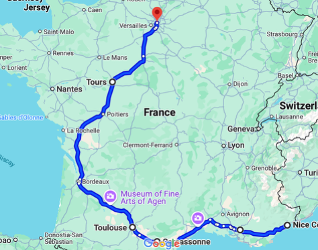As an introvert, I have always loved this time of year. I love autumn, with its bold, then fading colors and increasingly chilly evenings. I love the unique shades of blue the sky takes on in autumn. I love the warmth of community at Thanksgiving. And with each day growing shorter and the darkness longer, this introvert is even more inspired to find creativity and renewal in the solitude and personal reflection that come with these long nights and darkened days.
I love how music reflects the seasons. The music of harvest. The music of Thanksgiving. The music of Advent. Advent has a sound unlike any other season, filled as it is with minor-key music (“O Come, O Come Emmanuel”) and its language, filled with longing, hope, expectation, and wonder. For an introvert, all this inward-looking and longing feels like a deep balm. With the arrival of Christ comes our endless cries of Gloria in excelsis. The world explodes in joy, and all seems well.
In this holiest and most beloved of seasons, it is music that signals the arrival of something different and something profoundly holy. It includes music that fills us with joy and hope. It includes music that salves the brokenhearted and the ill with messages of goodwill, empathy, and love.
In the coming days, you will experience the full scope of this season. Its darkening days and minor keys. Its balm. Its joy. December 14th’s concert, “Prologue to Epilogue,” will trace the entire story of the season with anthems and carols. Singers, brass, organ, bells, and your voices will combine to remind us of our unique Christian heritage and our ever-hopeful nature. The “Longest Night Service” on Wednesday, December 17, will provide balm and solace in the magnificence of our candlelit church, familiar music, soaring solos, and prophetic preaching.
On December 24, the darkness of Advent turns to abundant joy with three incredible Christmas Eve services. The 4:30 p.m. Family Service (the largest service attended of the year) is an explosion of youthful energy and excitement as a cast of 100 children tell and sing the story. With the Bryn Mawr Brass, our staff of organists, our wonderful Choristers, and your voices, the walls of the church will soar with joy. At 8:30 p.m., we will gather around the table to hear the Christmas story said, sung, and preached, and celebrate the birth of our Savior. At 11:00 p.m., the much-beloved choir-led Christmas Lessons and Carols will return. Led by our renowned Sanctuary Choir and a cast of lay readers, the glorious story will be retold through scripture and song. From Adam to Mary to the Shepherds and the Wise Men, no characters will be excluded!
Where Advent music whispers promise, Christmas music proclaims fulfillment. Singing together, be it “Silent Night” or “Joy to the World,” or listening to the choir soar in its harmony, is a communal act that transforms us, individuals, into one people — one breath, one voice, one hope. Such is the power of music. Such is the power of community. Such is the power of this church. Such is the power of Christ.
